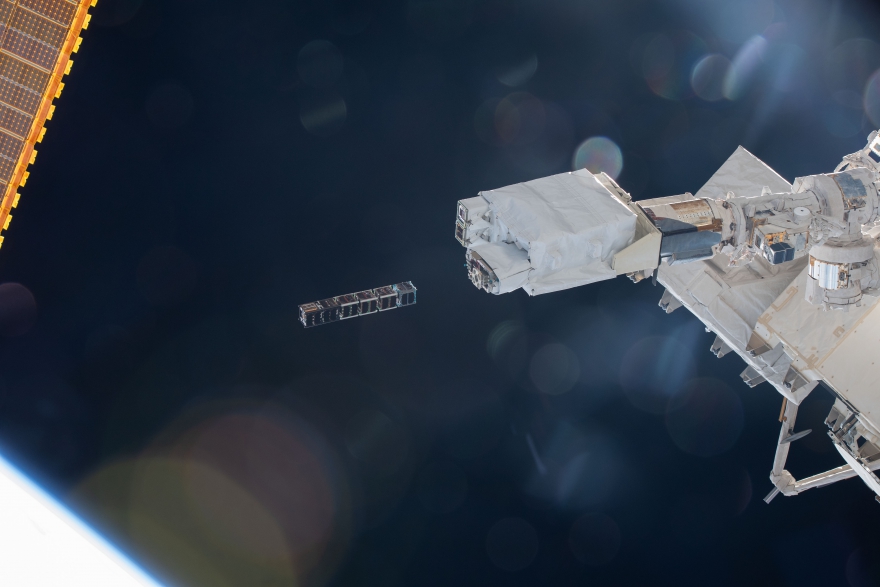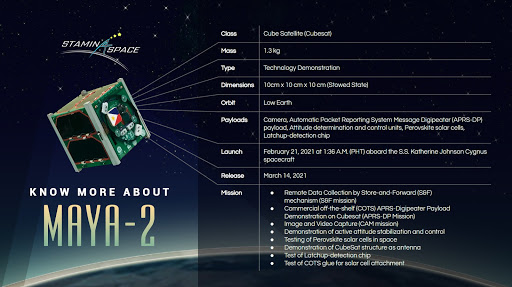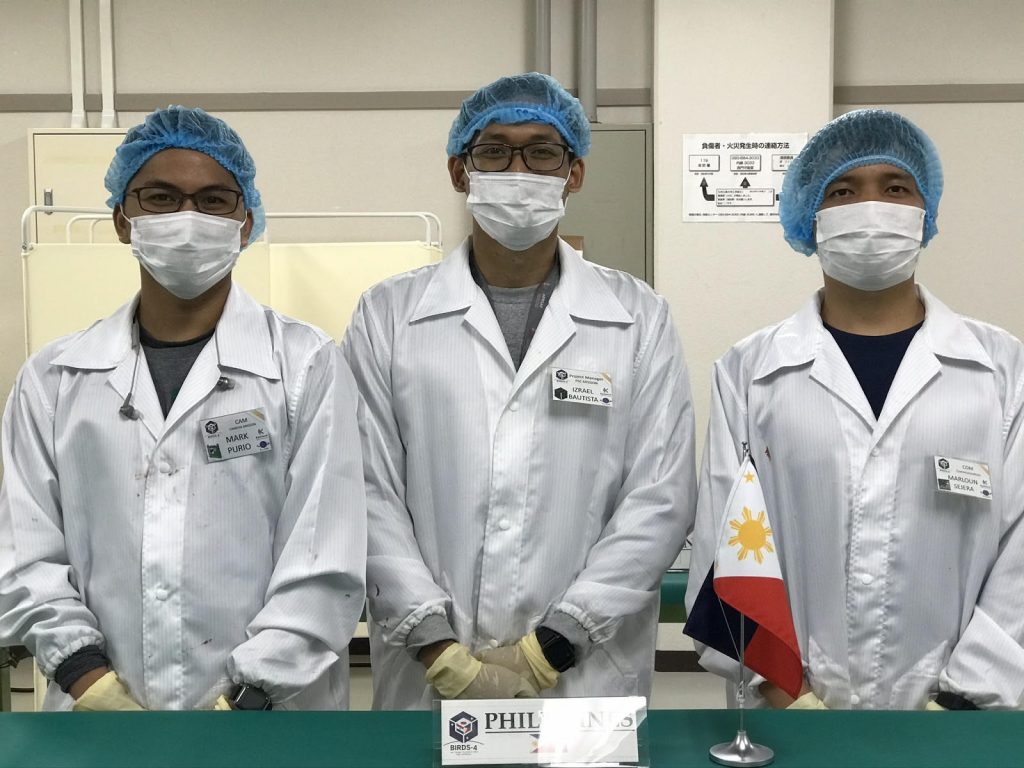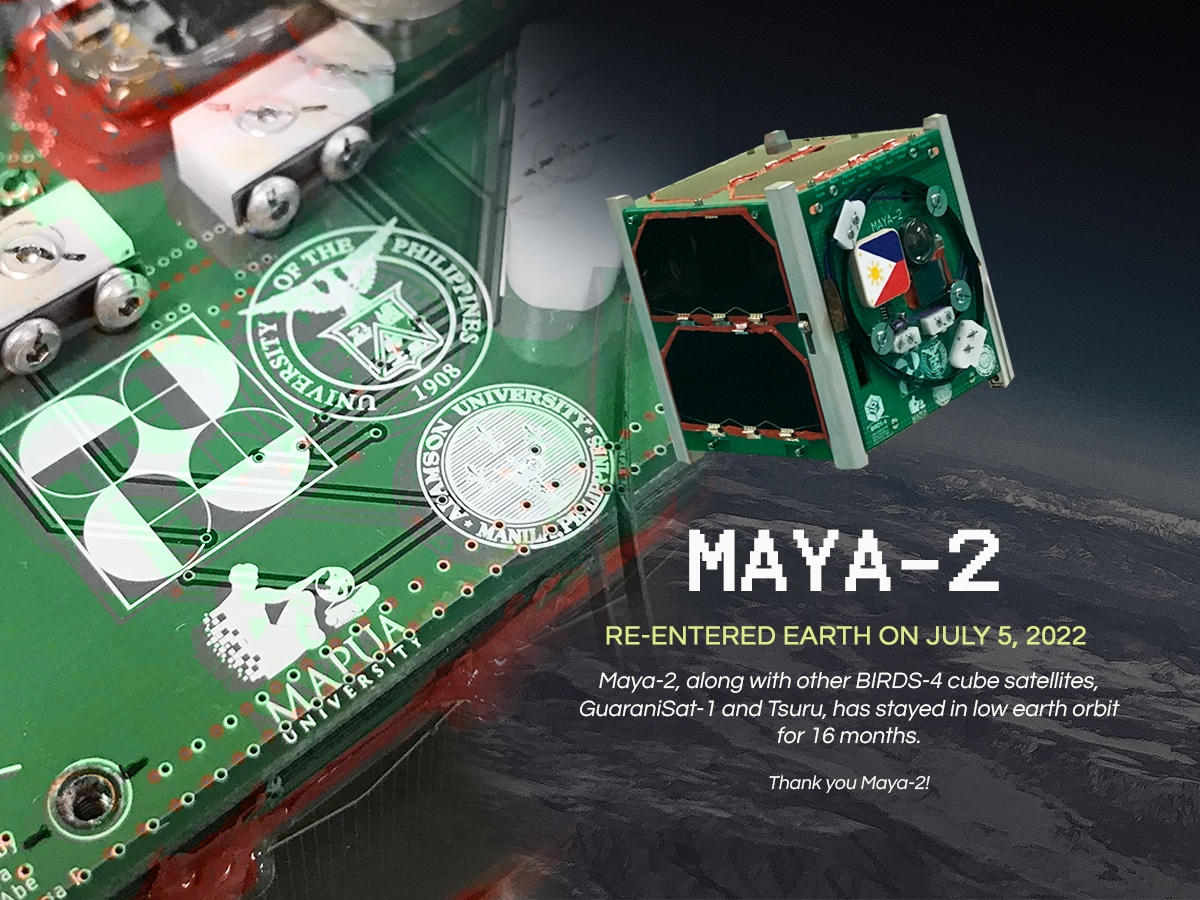Maligayang pagbabalik Maya-2!
After 16 months in space, the country’s second cube satellite (CubeSat) re-enters the Earth’s atmosphere, ending its mission on July 5, 2022.

Maya-2 was a CubeSat made by Filipino engineers under Kyushu Institute of Technology (Kyutech)’s 4th Joint Global Multi-Nation Birds Satellite (BIRDS-4) Project. Last March 14, 2021, Maya-2 together with other CubeSats Tsuru (Japan) and GuaraniSat-1 (Paraguay) were released into orbit from the International Space Station (ISS).
“Maya-2, and the other two BIRDS-4 satellites were in space for around 16 months, have orbited Earth 7,160 times! That is 4 months more than the expected life span of CubeSats deployed from the ISS!” said Engr. Marloun Sejera, one of the engineers who worked on the satellite.
Engr. Marloun Sejera together with Dr. Izrael Zenar Bautista and Engr. Mark Angelo Purio started developing Maya-2 in 2018. They were sent to Kyutech by the Department of Science and Technology’s Science Education Institute (DOST-SEI) to pursue doctoral degrees as part of a scholarship program done in cooperation with the Space Science and Technology Proliferation through University Partnerships (STeP-UP) Project of the STAMINA4Space Program.
“Maya-2’s more than 15 months of life span was full of learning for us. It was able to deliver useful data for future satellite missions, demonstrated several commercial-off-the shelf components and new technology. It opened the possibility for a more accessible entrance to space with low cost components that were proven to work in space. Of course the experience we also gained doing troubleshooting, operations and such are things that we know will be useful in our careers in helping our country further utilize space technology for societal benefit,” said Dr. Bautista.

The cube satellites were developed to demonstrate the country’s technological capabilities when it comes to the field of satellite technology. Maya-2 was preceded by Maya-1 which was released into space on August 10, 2018 and decommissioned on November 23, 2020. Maya-2 was developed and improved using the knowledge gained from the development of its predecessor. Like Maya-1, the Maya-2 CubeSat is capable of capturing images and videos using an on-board camera and collecting data remotely using a Store-and-Forward (S&F) mechanism. Both satellites also have an Automatic Packet Reporting System Message Digipeater (APRS-DP). But unlike Maya-1, Maya-2 has additional payloads like an attitude determination and control units for active attitude stabilization and control demonstrations, Perovskite solar cells, and a Latchup-detection chip.

“The fact that the flight model was developed and tested during the pandemic makes Maya-2 unique in my opinion. Construction of Maya-2 was tough, but the operations were more challenging.The project’s goal was to build capacity through practical experience, and I think that working through the most challenging moments helped us stay more focused while gaining the skills required for satellite development,” said Engr. Purio.
Maya-2 have been in the works since 2018 and was launched to the ISS last February 21, 2021 aboard the S.S. Katherine Johnson Cygnus spacecraft. The cubesat, together with the other two cubesats of the BIRDS-4 Project, were released into orbit on March 14, 2021 at around 7:20 p.m. PHT.
“Learning that the satellites you developed are nearing the end of their useful lives is sad yet gratifying. The satellites in orbit, in my opinion, are only tangible evidence that we built them; what’s more substantial, in my opinion, are the lessons we learned while working building and operating on them,” Engr. Purio when asked what he felt upon learning that Maya-2 was ending its mission.
“I think Maya-2 was able to further increase the awareness of FIlipinos in space technology. It helped bolster the hopes of Filipinos that one day, we will be venturing further into space as well and it begins with these small satellites. Having more universities being represented in the project also means further proliferation of knowledge since before, it was mostly students coming from UP, but with Maya-2, we have Adamson and Mapua joining us in our journey and I’m positive once Marloun and Mark comes back, they will help in know-how transfer of sat tech in their respective schools,” said Dr. Bautista.
Currently, the country still has Diwata-2 and Maya-3 and Maya-4 in space. Maya-3 and Maya-4 were the first cube satellites developed in a Philippine university setting. When asked about what is next for the STAMINA4Space, program leader Dr. Maricor Soriano said that we can still expect a lot from the program even though it is ending soon.
“The STAMINA4Space Program is winding down. As all government projects have a time and resource limit, what we’re left with after a program is done are the infrastructure (equipment, facilities), network (between agencies, universities), and highly-trained people. The infrastructure can continue to be used for training and service, the networks can be tapped for future collaborations, and the people – the most important output of all, can apply their learned skill in any endeavor they choose.”
***
The Space Technology Applications Mastery, Innovation, and Advancement (STAMINA4Space) Program is funded by the Department of Science and Technology (DOST), monitored by DOST’s Philippine Council for Innovation, Energy, and Emerging Technology Research and Development (DOST-PCIEERD), and implemented by DOST’s Advanced Science and Technology Institute (DOST-ASTI), and the University of the Philippines Diliman (UPD). It further aims to develop deep expertise that enables and sustains the growth of a local scientific-industrial base in space technology and applications in the Philippines.
Email: info@stamina4space.upd.edu.ph
Website: stamina4space.upd.edu.ph
Facebook: Facebook.com/STAMINA4Space
Instagram: Instagram.com/@stamina4space
Twitter: Twitter.com/@STAMINA4Space (main), Twitter.com/@Diwata2PH (Diwata-2)

